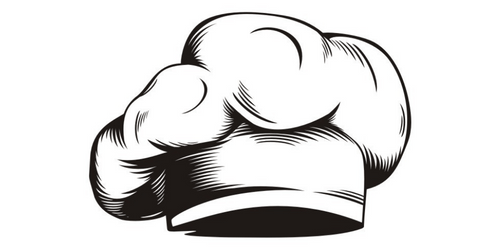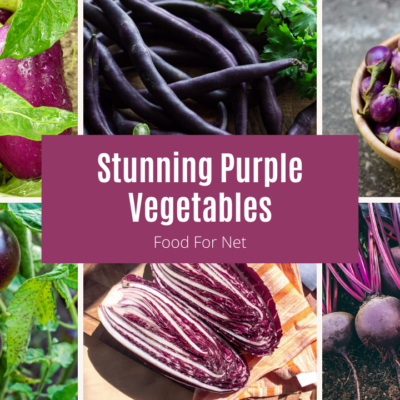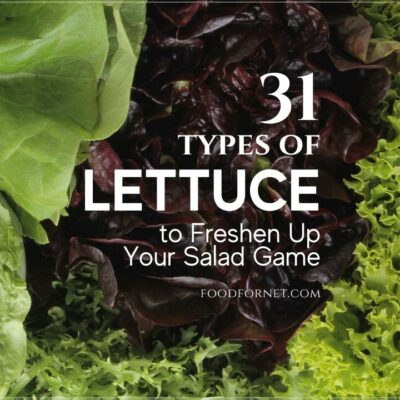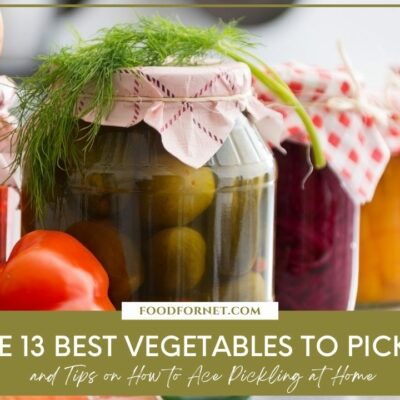
Broccoli is much more than a boring vegetable served at the dinner table. It has a surprisingly long and fascinating history, as it has been cultivated in Italy since Roman times, where it was often seen as a delicacy and was much loved. Broccoli took much longer to become popular in Britain, but it has now become a classic ingredient in kitchens throughout the world.
As broccoli’s reach has expanded, so too have the ways we use it. It’s no longer just a vegetable to steam or roast and serve on the dinner table. Now, it can be used to make broccoli rice, as a smoothie ingredient, to create a version of hummus, to make broccoli chips, and in countless other ways.
Still, despite this versatility, you can easily end up with too much broccoli. That’s especially true if you’re growing broccoli at home yourself or if you buy a ton on a really good special.
When you have too much like this, preservation becomes essential. Learning how to freeze broccoli is the most powerful approach here and is as simple as blanching the broccoli, drying it, then placing it in the freezer. That said, there are a few extra things to consider to ensure your broccoli freezes well every time.
P.S. The approaches we’re discussing today don’t just apply to regular green broccoli. They can also be used for the more unusual types, including purple broccoli and white broccoli. You can even use the same techniques for freezing similar vegetables, like cauliflower.
How To Freeze Broccoli

The process of freezing broccoli can be broken down into three main steps. The first focuses on prep, where you need to cut and clean your broccoli. Then there’s the famous blanching step, followed by simply freezing the broccoli pieces.
Steps For Freezing Broccoli
Chop And Wash Your Broccoli
Freezing broccoli begins with the prep work. You’ll need to wash the broccoli first and make sure there are no bugs or dirt stuck to it.
Then, you’ll need to separate the broccoli florets from the stems and cut the florets into evenly sized pieces (often between 1 inch and 1.5 inches). This ensures that the pieces all freeze at a similar rate. Remember, small pieces of broccoli will thaw and cook faster than large ones.
You can also freeze broccoli stems if you wish. It’s best to prep and freeze these separately than the broccoli florets, as they take longer to cook and have their own distinct texture.
Blanch It
Once the broccoli pieces are prepped, they then need to be blanched. This can be done through the classic technique of briefly immersing the broccoli in boiling water or you can steam the broccoli instead. Steaming is the most powerful choice, as fewer water-soluble nutrients are lost with steaming compared to boiling.
Either way, the idea is to partially cook your broccoli and then plunge it into ice water. Doing so deactivates some enzymes and helps your broccoli to better survive the freezing process.
Once the broccoli has been blanched, allow it to fully cool and make sure it is completely dry. Getting the broccoli dry is crucial, as any extra moisture can lead to ice crystals. Thankfully, it’s often enough to drain the broccoli and then pat the pieces dry with a paper towel.
Pre-Freeze The Broccoli (Optional)

Once the broccoli is dry, you have the option of pre-freezing it. Doing so involves placing a non-stick liner on a baking tray and carefully laying out your broccoli. Once you’ve done so, the tray can be placed in your freezer for a few hours.
The broccoli doesn’t need to completely freeze for this approach to work. After a few hours, you can take the pieces off the tray, transfer them to individual freezer bags or containers, and place them back in the freezer.
This pre-freezing step ensures that the individual broccoli pieces don’t stick together as they freeze. This means you can easily remove a small amount of broccoli when needed, rather than thawing or cooking the entire bag at once.
Place In Containers And Freeze
If you don’t pre-freeze the broccoli, you simply wait for it to cool after blanching and add it straight to freezer bags or containers. The type of container is up to you, although it’s helpful to make sure the size matches the amount of broccoli you’re freezing.
Also, think about your portion sizes during this step. How much broccoli do you normally use at a time? The portion in your freezer bag should reflect this amount. Otherwise, you risk having leftover thawed broccoli that you don’t need.
Other Ways To Freeze Broccoli

Broccoli Puree
Instead of freezing broccoli florets, you could look at freezing broccoli puree. This is often made by first cooking the broccoli and then pureeing it in a blender until it is smooth.
You can also add a little liquid into the blender to help obtain the perfect consistency. Herbs and spices can be included too, depending on how you plan to use the puree later.
Once the puree is made, you can then freeze it in an ice cube tray. Doing so gives you frozen cubes of puree that can later be transferred to a freezer-safe bag or container.
Alternatively, you might scoop the puree into a freezer safe container or a bag. If you use a bag, you can squash the puree down to form a flat layer that takes up very little space.
Broccoli Rice
Broccoli can also be riced in the same way as cauliflower, giving you an interesting ingredient and a low carb rice alternative. If you’re going to do this, it’s much better to rice the broccoli before freezing it, instead of after.
The freezing steps are the same for broccoli rice as for broccoli pieces. The main difference is that blanching is now optional (because the pieces of broccoli are so small).
How To Get The Best Frozen Broccoli
Choose High-Quality Broccoli
Tempting as it may be, don’t freeze broccoli that’s yellowing or starting to go soft. Such broccoli is already on its way out and won’t be great after freezing and thawing.
Instead, stick with fresh broccoli and freeze it as soon as you can. This way, you preserve the maximum amount of nutrients, while getting a thawed vegetable that actually tastes good.
After all, freezing can’t improve the quality of your produce. It simply halts the deterioration. So, if your broccoli isn’t great when you freeze it, it won’t be any better once thawed.
Don’t Skip The Blanching

Blanching isn’t essential, but it dramatically impacts the flavor and texture of your broccoli. If you skip it, you’re likely to end up with a less vibrant vegetable that’s mushier and doesn’t taste as good.
If you’re incredibly short on time and blanching isn’t an option, be sure to use your broccoli within a few months of freezing it. The broccoli will be best then, as the effects of not blanching get more noticeable the longer the broccoli is left in the freezer.
Remove All The Air
Broccoli should always be frozen in freezer-safe bags or containers. These should have good seals so air doesn’t leak into them over time.
If you’re using a bag, get as much air as possible out before freezing. This reduces the risk of freezer burn and ensures the best possible quality for your broccoli.
Label Your Container
Don’t forget to label the container when freezing broccoli. This step is easily missed, as you might imagine that you’ll remember when the broccoli was frozen. Yet, it’s easy to forget and difficult to tell what’s in the container once it’s been in the freezer for a while.
Your label should include the date that the broccoli was frozen, so you can be sure to use the broccoli before the quality decreases too much. Labeling the broccoli also helps you ensure you’re always grabbing the oldest bag of broccoli from the freezer, rather than one you froze recently.
How Long Does Frozen Broccoli Last?
In general, blanched frozen broccoli should last a year in the freezer and possibly longer. However, the quality will decrease over time (so, broccoli might be still safe to eat after two years in the freezer, but it’s unlikely to taste very good).
It’s best to consume your broccoli within six months to a year of freezing it for maximum flavor. The sooner you use it, the better the quality.
You should also check your broccoli before you use it. An excessive amount of ice crystals indicates freezer burn, which dramatically compromises the flavor and texture of your broccoli. While the broccoli is still safe to eat, it won’t taste very good.
If you thaw broccoli before cooking it, look for discoloration or an unusual smell. These are indications that the broccoli has spoiled and isn’t safe. Thankfully, such issues are rare with frozen food. They’re most likely if your broccoli was spoiled before being frozen.
What Happens When You Freeze Broccoli?
Most food changes at least a little after it has been frozen. When fresh, broccoli is crisp and firm with a vibrant flavor. Once thawed, the broccoli tends to be mushier, less vibrant, and with a decreased flavor.
You can decrease the effects by blanching your broccoli first and freezing it quickly. But, even here, you’re going to see some differences in flavor and texture.
How To Use Frozen Broccoli

The texture changes mean that frozen broccoli doesn’t work well in dishes that rely on the crispness of fresh broccoli. It’s also not great in recipes where broccoli is the dominant ingredient, as the changes in texture and flavor will be too obvious.
However, you can use frozen broccoli in plenty of situations, including stir-fries, soups, stews, and casseroles. The softer texture of thawed broccoli works well in most of these dishes and mightn’t even be noticeable.
These are also very easy approaches, as you don’t need to thaw the broccoli before you use it. You can simply use the frozen broccoli as you would regular broccoli. Just allow a little extra time, as broccoli takes longer to cook when frozen.
For other recipes, you might need to thaw broccoli before using it. The best dishes are those that blend the broccoli or combine it with many other ingredients, like many fritters, burger patties, or dips.
Other Ways To Preserve Broccoli

While freezing broccoli is the most popular way to preserve it, there are some other approaches to consider.
Dehydrated Broccoli
Broccoli can be easily dehydrated using your oven or a dehydrator. The process removes most of the water from broccoli. The process decreases the moisture content below the threshold for microbes, making the broccoli last much longer.
Regardless of your technique, it’s crucial to ensure that your broccoli has fully dehydrated. Notably, it should be brittle and easily snapped, with no moist spots. This broccoli should be stored in an airtight container, as it can absorb moisture from the air (which then increases the risk of it spoiling).
The broccoli can be used as-is or rehydrated and used in regular recipes. Of course, the process of dehydrating and rehydrating broccoli makes it softer and less crisp than it would normally be.
You can take things one step further and pulse the dehydrated broccoli in a blender. Doing so gives you a fine broccoli powder that offers an easy way to boost your nutrient intake.
Fermented Broccoli
Fermenting is another interesting approach. The broccoli is typically washed, cut into pieces, and blanched (the same initial steps we use when freezing broccoli).
Then, the broccoli pieces are added to a jar with a freshly made pickling brine. For fermenting, this is a saltwater brine, which allows beneficial microbes to convert sugars into lactic acid.
You’ll need to make sure that all of the broccoli is submerged under the liquid, as anything that sticks out could easily become moldy. It’s also important to regularly release pressure from the jar as it is fermenting.
Fermented broccoli is softer than fresh broccoli, with a distinct tangy flavor, so you can’t use it in the same recipes as regular broccoli. Still, you can just eat the broccoli on its own or serve it as a side with many meals. You can make a quick pickle version using a vinegar-based brine. While this has a similar flavor, the broccoli won’t last as long, making this a less powerful approach.

















 27 Scrumptious Types Of Muffins You Won’t Want To Pass Up
27 Scrumptious Types Of Muffins You Won’t Want To Pass Up